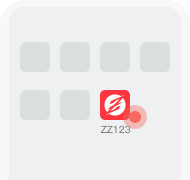
Idir
你听不懂歌词,但你会被Idir的声音吸引,以及纯净质朴的旋律。 Idir(原名Hamid Cheriet)是阿尔及利亚土著居民Berber(柏柏尔)文化复兴最重要的代表人物,从70年代就成为柏柏尔人的文化大使,用他富有情感的嗓音和诗一样的语言,把柏柏尔人的文化传统向世界传播。 1949年Idir出生在Haute-Kabylie的一个柏柏尔人居住的村庄,他是农夫的儿子,由教徒抚养长大,最早是学习地理专业,并在一个炼油厂工作。1973年,他在阿尔及利亚电台为一个著名艺术家做的节目中演唱了一首摇篮曲,而开始他的演唱生涯。他把这首歌曲重新录音,命名为“A Vava inouva”(我的小父亲),这首仅有人声和吉他伴奏的柏柏尔民间歌曲在阿尔及利亚是广受歌迷喜爱的歌曲。 Idir 用音乐传达着撒哈拉原住民对自由的渴望——即使有历史上的阿拉伯强权统制和近代的法国殖民,他们的土著语言和文化依然能够得以保留。Idir 在世界音乐领域以他的第一张专集(1976年)[A Vava Inouva] 开始被外界了解,歌曲“A Vava Inouva”被翻译了成七种语言。 在著名的成功之后,1979年,Idir创作发行了第二张专辑“Ay Arrac Negh” (您——我们的孩子)。 1991年,Idir重新开始了他的音乐事业,他发行了一张精选集,这张专辑中的17首歌曲都是从前两张专辑([A Vava Inouva]、[Ay Arrac Negh])中精选出来的。 1993年,Idir发行了新专辑——[les Chasseurs de lumières]( The Hunters of Lights)。[les Chasseurs de lumières]这张专辑反映了Idir对(个人)爱好、爱、自由与流放(他1975年移居巴黎后才认识到这一点)的看法。原声吉他给这张专辑中的歌曲以一种现代性表现方法的尝试。在这张专辑里的二重唱歌曲“Isaltiyen”中,我们能听到布列塔尼(Breton)歌手Alan Stivell的声音。 Idir是一个心怀信念的人,他经常参加许多支持不同的理想与事业的音乐会。在1995年的6月22日,六千多人参加了一场以和平、自由、宽容为主题的音乐会,他们拍手称赞“阿尔及利亚——我的生命”协会的创始人Khaled以及与会的各位音乐家。Idir也参加了这场音乐会,他用演唱的方式表达了对在1998年被暗杀的卡拜尔(阿尔及利亚东北部的柏尔人一族中的一分支)歌手Matoub Lounes的深切怀念。 1999年,Idir发行新专辑[Identities],重又开始了他的音乐生涯。这张专辑集合了Manu Chao、 Dan Ar Braz、Maxime Le Forestier、Karen Matheson(演唱A vava inouva 2)、Gnawa Diffusion、Zebda、Gilles Servat和Geoffrey Oryema 等一群来自非洲、法国、爱尔兰等国的世界音乐人,这是一张对Idir致敬的专辑。 2001年春, “21世纪柏柏尔的春天” 在巴黎召开,Idir在这场柏柏尔文化的欢庆会上再次重申了他的民族身份观。同年7月8日,他组织了一场公益音乐会,为Kabylia的人民募捐,当时,反政府暴乱正猛烈地冲击柏柏尔文化的发祥地。Idir这一举措吸成功引了许多明星和他成千上万的阿尔及利亚以及法国歌迷的加入,他们用实际行动支持Kabylia人民。
by Caspar Salmon
Born Hamid Cheriet in 1949 in Algeria, Idir found success in the '70s with the song "Rsed A Yidess" and two albums of North African-flavored songs, before making a high-profile comeback in 1999 with an all-star collaboration album, Identités. Following the success of "Rsed A Yidess" in 1973, Idir left for Paris to sign with Pathe. They released his first album, A Vava Inouva, in 1975; its title track became a mammoth hit. Casting him firmly in the tradition of Berber music, his signature sound featured traditional Kabylian flute and derbouka. Along with Ferhat Mehenni and Lounis Ait Menguellet, Idir helped to bring rai music to mainstream audiences, paving the way for artists like Rachid Taha and Khaled. Upon returning in 1999, Idir recorded Identités with artists like Manu Chao and Zebda, and repeated the trick on 2007's portmanteau album La France des Couleurs. The desire to reflect contemporary, racially integrated France is felt in all his new music, in the texts as much as his choice of collaborators, ranging from African legend Tiken Jah Fakoly to French urban acts like Kenza Farah.
by Caspar Salmon
Born Hamid Cheriet in 1949 in Algeria, Idir found success in the '70s with the song "Rsed A Yidess" and two albums of North African-flavored songs, before making a high-profile comeback in 1999 with an all-star collaboration album, Identités. Following the success of "Rsed A Yidess" in 1973, Idir left for Paris to sign with Pathe. They released his first album, A Vava Inouva, in 1975; its title track became a mammoth hit. Casting him firmly in the tradition of Berber music, his signature sound featured traditional Kabylian flute and derbouka. Along with Ferhat Mehenni and Lounis Ait Menguellet, Idir helped to bring rai music to mainstream audiences, paving the way for artists like Rachid Taha and Khaled. Upon returning in 1999, Idir recorded Identités with artists like Manu Chao and Zebda, and repeated the trick on 2007's portmanteau album La France des Couleurs. The desire to reflect contemporary, racially integrated France is felt in all his new music, in the texts as much as his choice of collaborators, ranging from African legend Tiken Jah Fakoly to French urban acts like Kenza Farah.
单曲


















